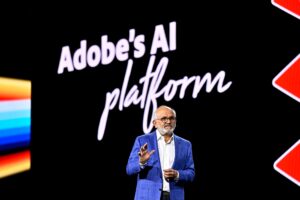Brought to you by SolarWinds

With traditional monitoring, whenever an app or digital service is down or hits a certain threshold, an alert is raised. The IT team will then rush to understand the problem, identify the root cause, and resolve it. This is the typical Detect, Identify, Fix, Verify, and Resolve process IT teams follow.
The problem can originate in any part of the digital delivery chain. Did the on-premises or cloud servers run out of memory? Is it a network issue, connection error, or database overflow?
Observability is capable of more than “monitor and alert,” said Bharat Bedi, global head of system integrator business for SolarWinds, a leading provider of simple, powerful, and secure IT management software.
It can provide, collect, analyse, correlate, and visualise insights and analysis and can subsequently help automate remediation, which translates into improved operational efficiency, optimal IT performance, and ultimately improved business outcomes, he added in an e-mail interview.
Q: What, in a nutshell, is observability to SolarWinds?
A: While traditional monitoring captures, processes, and reports on a variety of telemetry data and notifies of changes, observability focuses on collection, correlation, and analysis of cross-domain data and provides insights on the performance of the system in question, ultimately helping to resolve service impact problems as they may occur.
Observability relies on machine learning (ML) and AIOps to analyse and correlate large real-time and historical data sets consisting of metrics, logs, and trace data from the entire digital service chain.
Hence, observability allows organisations to understand and have end-to-end oversight of their critical business systems and revenue generating apps and services.
With observability solutions, business agility can be improved by enabling the IT organisation to shift from a reactive to a proactive posture to achieve optimal IT service performance, compliance, and resilience.
Q: How does this build on monitoring tools businesses have been using previously?
A: Monitoring is part of observability, but while stand-alone monitoring focuses on measuring and reporting on specific outputs from network, cloud, infrastructure, and application elements, observability is designed to provide more contextual information, which is analysed over historical and real-time trends of data coming from various sources to help expedite root cause identification, reducing operational toil and inefficiency.
In cases where an automated remediation solution option is possible, observability can also be tasked to execute corrective actions.
Q: There seems to be a bit of skepticism about observability being a buzzword. Is this what you’re hearing from customers too?
A: Observability has been around for a while, and while some may think it’s merely a buzzword, the industry has already embraced the concept with great business outcomes. Observability is here to stay!
Full-stack observability, in its true sense, presents a unifying, one-stop solution for companies who are investing significantly in digital transformation and need a simple, secure solution for simplifying their IT operations.
Q: What do you think will drive the adoption of observability tools in Asia-Pacific?
A: The conversations we’re having with CIOs and their IT departments differ greatly today. Instead of zooming in on a specific problem or a specific product, we’re reviewing and assessing the entire IT environment, helping resolve business issues, accelerating digital transformations, and enhancing overall business value-add.
IT departments today are dealing with huge overall system complexity across distributed network, cloud, systems, application, and database infrastructure. Historically they’ve been relying on stand-alone (and often duplicate) monitoring and management tools deployed across operations, systems, development, and security.
Such a piecemeal and component-level approach can result in immense operational inefficiency and, worse, incomplete visibility, which can ultimately lead to outages and bad digital user experiences. With the stake in the industry being so high, companies can’t afford to take these risks.
SolarWinds knows a thing or two about IT operations, as we’ve been successfully serving the needs of IT pros for over 22 years. When you look at the technology vendors providing application performance monitoring (APM) and observability solutions to the enterprise, we see a gap between the solution capabilities and the requirements of the environments needing to be observed and monitored.
We set out to develop a next-generation solution, and we’ve now launched the SolarWinds Observability platform, which offers organisations of any size a comprehensive, unified, and cost-effective full-stack solution.
We aim to help businesses optimise performance, ensure availability, and reduce remediation time across on-premises and cloud environments by increasing visibility, intelligence, and productivity.
We’re confident our modern observability solution will meet the evolving needs of customers today and well into the future.







Great insight